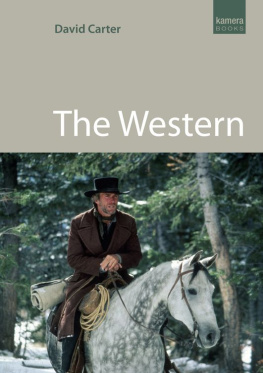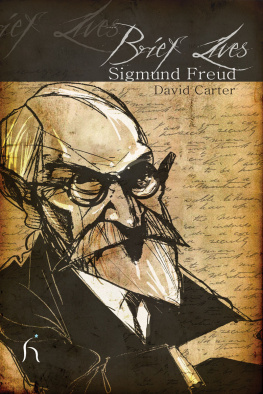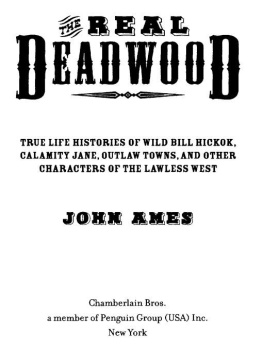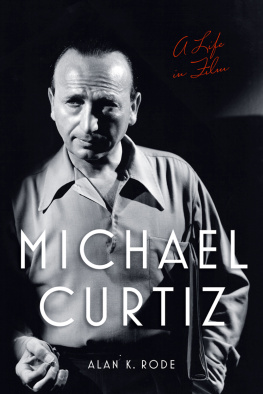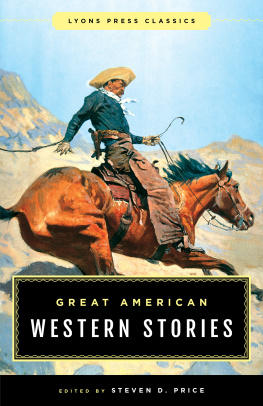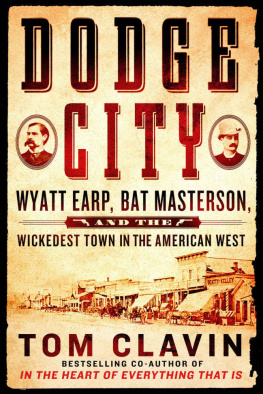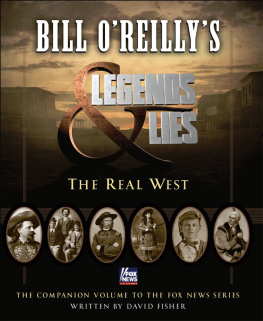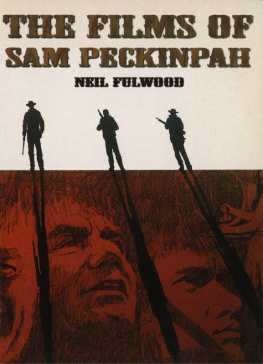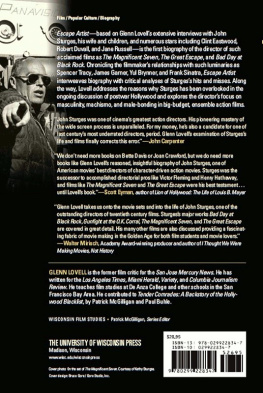My greatest debt in writing this book is to all the fans I have discussed westerns with over the years, to the major scholars in the field, and to my ever-diligent editor Hannah Patterson.
In one sense, The Western hardly needs an introduction. In the two decades prior to World War Two, and in the first three after it in particular, most cinemagoers could describe the main characteristics of a western: stories of rugged people in harsh terrains, attempting to settle and civilise the western territories of America; their conflicts with the Native Americans known as Indians; their struggles to establish law and order; wagon trains, stagecoaches and newly built railroads; sheriffs and marshals battling against outlaws; gold rushes and bank robberies; shoot-outs and hangings; buffalo stampedes, cattle drives and rustlers. Nowadays, there are a vast number of academic books and encyclopaedic volumes devoted to the genre, and a book of the present scope cannot and does not attempt to compete with them. Some of the most useful of the more extensive studies are listed in the resources section together with some relevant general works of reference. What this book does aim to provide is a general introduction for the enthusiast or student who wishes to discover more about the range and variety of western films, and also a source of reference for both the recognised classics of the genre and some that have been unjustly neglected or overlooked.
Aside from a chapter devoted to Italian westerns (the so-called spaghetti westerns), the books main focus is the American cinema western. Although a considerable number of westerns have been made outside America, not only in Italy and Spain but also in countries such as Germany and Russia to date 500 at least space here does not permit a survey of these. Neither is there scope to explore the close links that have existed between cinema westerns and TV series, but several of the books mentioned in the resources section do provide further information.
The Western does, however, cover the historical background of the American West, and also westerns in literature, which predated and greatly influenced many of the great cinema westerns. Information is also provided on the notable historical events which westerns either alluded to or recreated, usually distorting and romanticising the facts.
Emphasis is placed on the so-called Golden Age (from the late 30s to the 70s approximately), when many recognised classic westerns were produced, a choice that reflects the declining popularity of the genre as a whole. Other chapters consider more recent contributions to the genre and modern classic westerns.
Ironically, while the early silent period was the most prolific in terms of the number of films made, with many hundreds being made in many years, most were very short, cheaply made and of little artistic merit. Only the outstanding achievements of this period are examined here. Many low-budget films, known as B westerns, were also made during the 1940s and 50s. A brief mention of them is made in chapter 5.
Most westerns do not fit into easy compartments and for any complex and thorough consideration would have to be considered under several headings at least: westerns about revenge, westerns about law and order, feminist westerns, revisionist westerns and so on. One of the most impressive scholarly studies of the western David Lusteds The Western manages this feat and it is an excellent and extensive study. However, it requires prior knowledge of a large number of westerns to be appreciated fully. Since many readers will come to the present book knowing maybe a reasonable number of westerns, some of the major directors in the genre, and the most well-known actors, the films in chapter 5, about the Golden Age, are organised by the directors name. After a brief biography, the major westerns of each director are listed chronologically, with only the screenplay writers acknowledged each time. Actors, cinematographers, etc are mentioned where relevant in the plot summaries or comments. Other headings such as Music are introduced occasionally if they are of particular importance in the film. Some other works which do not fit easily into the lists of major directors but are worthy of attention are included in chapter 7, and organised chronologically with the same range of credits. There are special sections on Comic Westerns (chapter 8) and the most well-known spaghetti westerns (chapter 9). Chapter 10, entitled The Death and Rebirth of the Western, provides similar information and comments on some recent westerns. In addition, some recognised classics mentioned in chapters 5 and 10 are accorded more extensive analysis in chapters 6 and 11 respectively.
It must be stressed that many films could fit well into several different chapters. This is especially true of some of the comedy westerns in chapter 8. The easiest way to find entries on particular films is therefore to refer to its title or directors name in the Index.
Finally, one matter should be clarified concerning the issue of political correctness. Throughout the book I have quite deliberately used the term Indians for the peoples who are nowadays referred to as Native Americans. This is because it was the term commonly used in the nineteenth century and in virtually all the westerns in which they appear. It would be pedantic and historically unjustified to use the more recent terminology. The reader should therefore assume that whenever the term Indian/s occurs, the concept of Native American is implied.
THE WEST
The concept of The West is a very loosely defined term, both geographically and historically, when applied to those parts of America associated with the literary and film genre of The Western. Apart from the eastern seaboard, almost every part of the United States had been referred to as The West at some stage in the countrys history. Nowadays most people take it to refer to the area of the Great Plains and the Southwest in general, but officially the federal government defines The West as including the following states: Alaska, Arizona, California, Hawaii, Idaho, Montana, Nevada, New Mexico, Oregon, Utah, Washington and Wyoming. The West referred to in popular imagination, in literature and film consists usually of those areas associated with the final frontiers of American settlement, incorporating specifically the plains, mountains and deserts to the west of the Mississippi River. This is the area associated commonly with cowboys, Indians, covered wagons and outlaws. But cowboys and cattle driving were also common in several non-western states, such as Nebraska and Kansas.
Most of this western area became part of the United States through the Louisiana Purchase in 1803, though the Southwest remained a Mexican possession until 1848. The Pacific Northwest was opened up for settlement via the Oregon Trail, which was established by the Lewis and Clark Expedition of 180406. Crucial in increasing migration to the West Coast was the discovery of gold in California in 1848. This led to the admission of California into the Union in 1850, only two years after it had been ceded from Mexico.
The Great Plains remained only sparsely populated for many decades, thought of as inhospitable desert land, with little water, and hostile Indian tribes. By and large, they were not opened up to white settlement until after the Civil War of 186165, when the Plains Indians were gradually conquered and eventually deprived of most of their lands by the settlers and through the agency of the US Cavalry. The conflicts between the white pioneers and the Indian tribes in these areas formed one of the basic themes in the western genre. Another central theme became the conflicts between the Indians and the cowboys, hired by ranchers to drive cattle across many hundreds of miles to railheads where the animals could be transported east to the markets. With the development of cattle-farming and mining communities also came the growth of towns, many of them with rather unruly lifestyles. Imposing some system of law and order became a major concern in many such places, and another major theme in many westerns, with the figures of the town sheriff, his posse of honest men, and US marshals featuring prominently.

